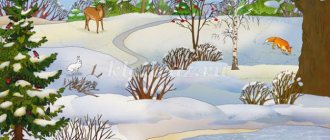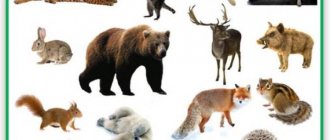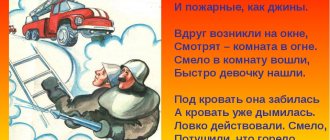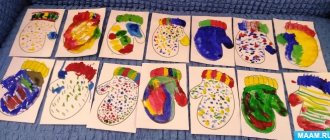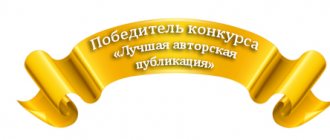Abstract. Theme “Animals of hot countries”
Transcript
1 State budgetary educational institution, kindergarten 73 combined type, Primorsky district of St. Petersburg. Abstract of Continuous educational joint activities on speech development with children of the senior speech therapy group. Topic “Animals of hot countries” Educational areas: “Social communicative development”, “Speech development”, “Cognitive development”, “Physical development”. Types of children's activities: Cognitive, playful, motor, communicative. Technologies: Information and communication, triz “Yes no”, “The fourth odd one”, mnemonics “Who is missing” year Compiled by teacher Kosachenko E.K.
2 “Social communicative development”: Improve the ability to work in a team and carry out a common cause. Continue to enrich the experience of cooperation and friendly relationships with peers. “Speech development” Enrich children’s speech with nouns denoting the names of animals and tropical climate zones. Enrich children's speech with adjectives that characterize the appearance, habits of animals, and ways of feeding them. Exercise children in the formation and use of nouns in speech. ch. I.p., using the suffixes itsa, -iha, -yonok, -onok. Practice agreeing nouns with adjectives in gender and number. Exercise children in the formation and use of possessive adjectives in speech. Continue to teach children to identify the first and last sound in a word, determine the position of sound in words, and consolidate the ability to distinguish a vowel sound from a consonant. Develop the ability to divide words into syllables, repeat the method of dividing words into syllables. To develop children’s ability to work on deformed sentences. Develop logical thinking, develop auditory attention, visual perception, verbal-logical thinking. “Cognitive development”: Continue the formation of ideas and knowledge about the nature of Africa. Get acquainted with the peculiarities of the flora and fauna of the natural zones of Africa. Continue to develop a sense of love for nature and the world around us. “Physical development”: To develop children’s ability to coordinate speech with movement. Improve children's motor skills and abilities. Preliminary work: Watching TV shows about animals of hot countries, visiting the zoo, looking at the albums “Wildlife”, “In the Animal World”, a geographical map of the world, reading poetry, stories on the topic, guessing riddles. Demonstration material and equipment: Magnetic board, a set of magnets, a tape recorder, a disk with the song “Chunga Changa”, a laptop computer game “Who Hid in the Jungle”, a disk with a slide presentation “Nature of Africa”, a toy monkey Chichi, object pictures with the image animals of hot countries and their babies, cards “Who is the odd one out?”, “Magic Train”, cap, ball, notebook. 2
3 Organizational moment. Hello guys! Let's smile and greet each other affectionately on this beautiful day. And my cheerful ringing ball will help us with this. We will pass the ball to each other, say hello and affectionately call each other by name. Game with a ball “We say hello affectionately” Educator: guys, we all said hello to you. Progress of the lesson. Guys, I want to invite you to go on a journey with me. Will you go on a trip with me? Guys, what kind of transport can you use to travel? Children's answers. And you and I will travel by plane. I invite everyone to take a seat in the aircraft cabin. But before we take off, we need to set the plane's course. Do you know where we will fly? Children's answers. But then listen to my riddle, it will help you guess where we will go, listen carefully: Where is such a place? What kind of country is this? She's very hot. Sun, summer all year round Sea, palm trees and sand. The deserts here are hot, the stars are bright at night. There are dense forests and thorny plants. What kind of country is this? She's very hot. (Africa) Well done, you guessed the riddle correctly, and so we go to Africa! Educator: Dear passengers! Fasten seat belts! Start the engines! Take off! (children imitate movements: fasten seat belts, “winder” 3
4 start the engine, lift your arms to the side). Well done, but the journey to Africa is very long, and so I suggest you play a little. An animal arrived at the St. Petersburg Zoo, all the data about it was written down in my notebook. And so - in order to guess who it is, you will ask me questions, the answers to which will be “yes” or “no”. And you will find out which of the animals entered our zoo. If you ask the question incorrectly, there will be no answer! Game “Yes, no ka” (the teacher makes a wish for a tiger). Well done, a tiger has arrived at the zoo, how did you and I guess that a tiger had arrived? Because the tiger. (summarizing). Oh, guys, look out the windows of our plane, how rich the nature of Africa is. (slide show of African nature, with comments -5 slides) Sahara Desert, Kallahari Desert, animals of Africa (2 slides), jungle. Educator: While you and I were playing and looking out the windows, our plane flew up to Africa. Here we are all descending, towards our runway, well our flight is over. Unfasten your seat belts and get off the plane. Guys, look at us, we are greeted by the African monkey Chi Chi. Monkey Chi Chi: Hello guys! I am so glad to see you in my beloved Africa. I want to introduce you to my friends! Educator: Guys! Are you interested in finding out who Chi-Chi the monkey wants to introduce you to? Then try to guess her riddles (as you guess, the guessing pictures are placed on a magnetic board): He has big ears, he wears a long trunk. Although he is strong, he is good-natured, because this. A log is floating along the river, It is very angry. Those who fall into the river will have their Nose bitten off. You know, it’s not for nothing that he is the king of beasts in his hot Africa. Where vines hang from the trees, different things live in the jungle. 4
5 This beast is somehow strange, Its neck is like an arrow on a faucet, To reach the herbs with its mouth, It will fold in half. What kind of horses? Everyone is wearing striped shirts. He wears a horn on his nose, and is called. Monkey Chi-chi is very happy that you guessed the riddles correctly. Who are they? Who guessed who we will talk about today? Children's answers. That's right, today we will talk about animals of hot countries. Didactic game “Identify the first and last sound” Guys, let’s determine the first and last sound in the names of these animals: Giraffe (z f), elephant (s n), crocodile (k l), zebra (z a), lion (l f), monkey (o a) Guys, the monkey Chi-chi really liked how you solved riddles, identified sounds, and she invites you to dance a little. Children dance to the song "Chunga Changa". Well done, you danced so cheerfully and joyfully. Guys, today is a day of disobedience in Africa. The little cubs ran away from their mothers, ran, frolicked and confused their mothers. Help each cub find its mother. Didactic game “Who has who?” Children on the flannelgraph expose each cub to its mother. Then the teacher checks the correctness of the choice and asks the question - what is the name of the tigress's cub? Children answer with a complete answer: A tigress's cub is called a tiger cub. Guys, now let's name the whole family, I will point to the picture, and you will name dad, mom and baby. (father tiger, mother tigress, cub tiger). Tiger - Tigress tiger cub Hippopotamus - hippopotamus hippo Giraffe - giraffe giraffe Elephant - mother elephant Lion lioness lion cub Camel - she-camel baby 5
6 Good guys, you did a great job with this task. But the camel family asks us to help them, their baby camel wrote a letter to his grandmother and made mistakes in his sentences. Guys, let's help the baby camel make the correct sentences? Children's answers. Our ball will help us with this. I will throw the ball into your hands with a hit on the floor, and you must catch the ball, formulate the correct sentence and throw the ball back into my hands with a hit on the floor. Game “What did the baby camel mix up?” (with a ball) Educator: Say that the little camel got mixed up when he made up the sentences. A giraffe chews leaves. Child: Giraffe chews leaves. Educator: The palm tree is sitting on the monkey. Child: The monkey is sitting on a palm tree. Educator: The vines swing on monkey bars. Child: Monkeys swing on the vines. Educator: The mouth of the crocodile opens. Child: The crocodile opens its mouth. Mothers and cubs are very happy that you helped them and offer to play hide and seek. Didactic game "Who is missing." Yes, our task was not an easy one, and I suggest you rest a little. Physical exercise “Have you seen” You have seen a camel, (They shrug in surprise.) which flies without touching the ground (They wave their arms like none of the hooves? wings, while simultaneously walking in place.) In our city you (They shrug in surprise.) a leopard seen, 6
7 That he’s used to spending the night (They crouch, hands under their cheeks., under a bench at the station? Well, have you seen the lion, (Shrug their shoulders in surprise.) the lord of the beasts, How easily he plays (Imitate playing the violin) on his violin? Have you seen how loudly (They shrug their shoulders in surprise.) bawling in the savannah Kangaroo, not a penny (Hands folded together high on the chest and bouncing.) without having it in his pocket? Have you seen that in a puddle (They shrug their shoulders in surprise.) sits a hippopotamus, like a girl, grimacing ( They make faces.) all day long? Have you seen in our yard (They shrug their shoulders in surprise.) in the yard, a parrot that flies under the windows, (They bend their arms at the elbows and play with a ball? They press them to the body, make frequent waves of their palms.) And the chicken Have you seen, (Shrug in surprise) who managed to escape from the broth, (Run in place on tiptoes) not plucked and intact? But have you seen me, me (Shrug in surprise), friends? And what are they making up, (Spread their hands in front of them) .) Am I an inventor? Guys, the monkey Chi-chi says that in Africa you need to be very sharp to notice animals. She wants to check whether you are sharp-eyed or not. Didactic game "Who hid in the Jungle." Look at the screen, what kind of Jungle is depicted here! And if you look more closely, you will see that someone is hiding in them. Children look at the Jungle screen. Guys, who hid in the jungle? Suggested children's answers: - There is a lion hiding in the jungle. How did you guess? I see a lion's mane. — A crocodile is guarding its prey in the river. Why do you think so? I see a crocodile's mouth. — A monkey is swinging among the vines. How did you find out about this? I see a monkey's tail. — I noticed the elephant because elephant ears are visible in the distance. Well done! You noticed all the hidden animals. Monkey Chi-chi is very happy for you! Didactic game “Whose, whose, whose?” Chiki the monkey is very inquisitive and she wonders, do you know: whose ears are the largest? — whose teeth are the sharpest? — whose paws are the strongest? — whose tail is the longest? - who knows why a monkey needs a long tail? Child's Suggested Answer: Monkeys need long tails because they like to swing on vines. 7
8 Well done, you completed this task, but the monkey Chi-Chi has one more question: who is the odd one out among these animals? Didactic game “The fourth odd one” Tiger, zebra, lion, crocodile. (Children's answers are classified according to different criteria). The guys, the animals of hot countries, played with us so much fun that they were a little tired, it’s time to send them home, well, so that they get there faster, we’ll send them home on a magic train for animals. Didactic game “Magic Train” A train with three carriages is displayed on a flannelgraph. Children are given cards with an animal, they turn the cards over, divide the words into syllables and place the picture in the carriages in their pockets. - Attention! Attention! The Magic Train leaves in 1 minute. Passengers are requested to take their seats. — Guys, let's help the passengers take their seats in the carriages. In the first carriage, which is also a locomotive, we will put animals with 1 syllable in their names, in the second with 2 syllables in their names, in the third with 3 syllables, in the fourth with 4 syllables. - Get started. Take one card at a time, divide the word into syllables and put the animals in the right cars. - Let's check everything together. (Children, together with the teacher, once again divide the words into syllables and check). Educator: Well done, you did a great job. Guys, we sent the animals home, it’s time for us to return. Take your seats on the plane. Dear passengers! Fasten seat belts! Start the engines! Takeoff! (children imitate the movements: fasten their seat belts, “winder” start the engine, fly their arms to the side). Summary of the lesson: While we are flying, I want to ask you, what country were we in today? What animals did we meet today? What are these animals called? 8
9 Guys, what tasks did you like to complete? What tasks did you find difficult? Well done guys, here we are, our plane has landed. Our flight is over, unfasten your seat belts and get off the plane. 9
Summary of the lesson on speech development "Animals of hot countries" middle group
- What elephant? (Huge, powerful, hefty, gigantic, strong, large, big-eared, long-nosed, calm, hardy, herbivore)
– What kind of zebra
(Black and white, fast, dexterous, beautiful, maned, short-haired, herbivorous)
– What kind of hippopotamus?
(Large, fat, short-legged, sedentary, lazy, big-headed, herbivore)
- What kind of giraffe?
(Tall, spotted, long-legged, calm, long-necked, herbivorous)
- What kind of lion?
(The lion is strong, big-maned, angry, lazy, formidable, predatory)
- Dunno realized that the elephant, zebra, hippopotamus and giraffe are herbivores in hot countries.
Explain to him what herbivores mean? - And a lion is a predatory animal. What does it mean? (This means that the lion eats meat)
- Guys, Dunno remembered a lot of new and difficult words: big-eared, short-legged, long-necked, sedentary, black and white.
4.
Let's play a game with Dunno: “How can I say otherwise?” (formation of participles and updating of predicative vocabulary)
- What is the kangaroo doing? (A kangaroo jumps across the field.)
- What is the kangaroo doing?
What kind of kangaroo? (Kangaroo jumping across the field )
- What is the hippopotamus doing?
(Hippopotamus bathes in water.)
- What kind of hippopotamus?
(Hippopotamus bathing in water )
- What is the lion doing?
(The lion chews a bone.)
- What kind of lion?
(Lion gnawing a bone )
- What is the elephant doing?
(The elephant drinks water.)
- What kind of elephant?
(Elephant drinking water )
- What is the giraffe doing?
(Giraffe picks leaves.)
- What giraffe?
(Giraffe picking leaves )
5. Physical minute
We are walking through the savannah. The path is long, our home is far. It's a hot day, let's sit in the shade. We'll sit under the palm tree. Let's sit, relax, and go to class.
6.
- Guys, you did great, you helped Dunno.
Now he is fully prepared to go on a trip to hot countries, and before setting off on the trip, he invited his friend, the storyteller Merlin, to join us for a lesson. (Maxim changes clothes and goes to class)
Reads the poem:
I am a storyteller, I am a storyteller, I am a storyteller Merlin! The artist of the most colorful and festive paintings! I will wave a beautiful wand, wave a magic one, and begin to show an African fairy tale. And the fairy tale is not simple: It is about miracles, About a lion, About a giraffe, About a zebra and an elephant.
– You and I will now help revive the picture that the storyteller brought. You have written fairy tales about animals of hot countries. Whichever animal you tell about will appear in the picture.
Why does an elephant have long ears?
In ancient times, elephants had small ears. An elephant named Yashka loved to watch birds. He really wanted to fly on his own. He closed his eyes and began to flap his ears, imagining that he was soaring above the clouds. Yashka was fascinated by this activity and could swing them for hours. His ears grew to gigantic proportions. Since then, all elephants have large ears, which they use to ward off insects and cool themselves in the heat.

